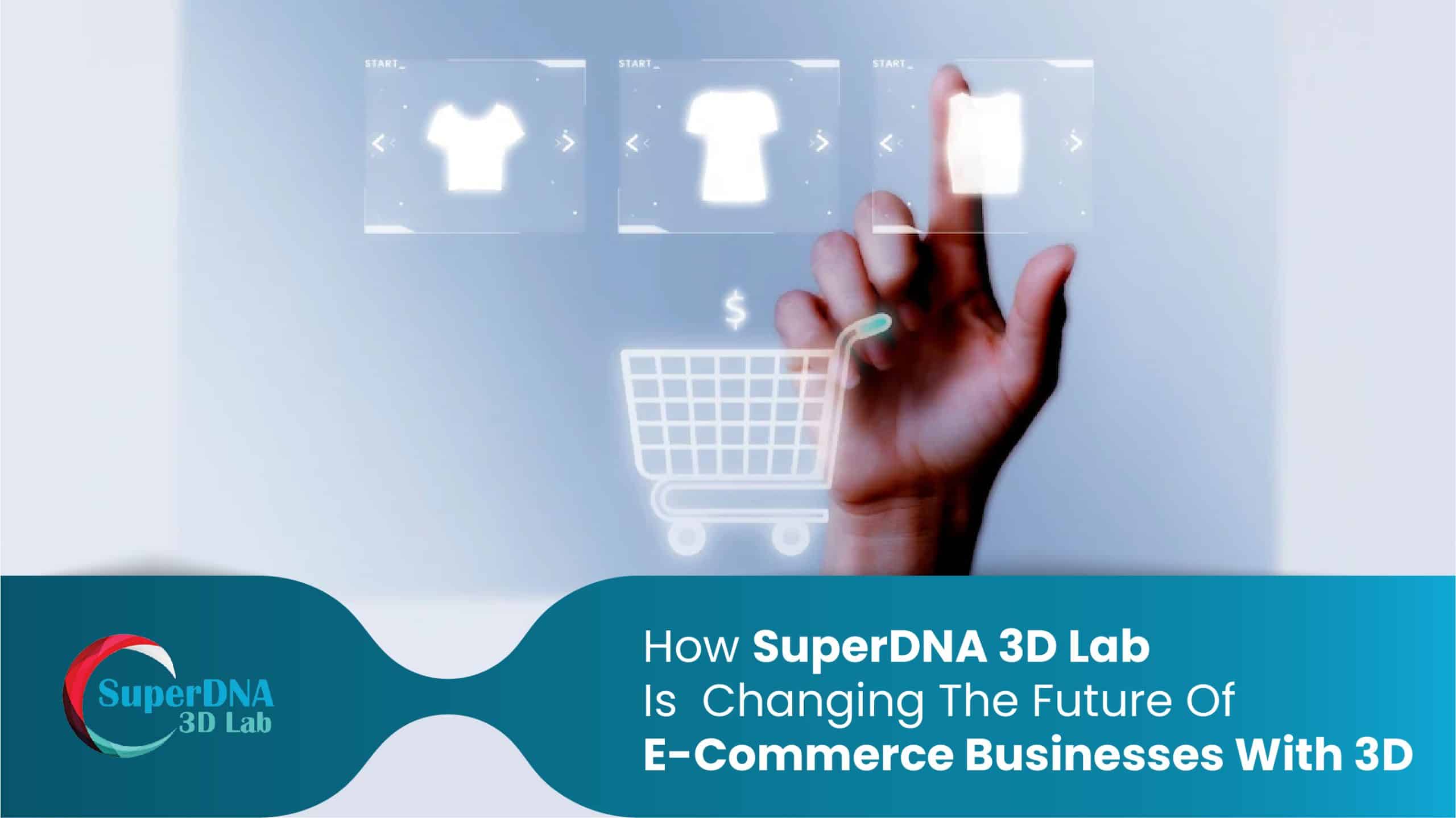
SuperDNA 3D Lab is one of the leading 3D product visualization players in the market. The company offers 3D modeling, texturing, lighting, composition, editing, and several other services that intend to put your products in the best possible light. They have pioneered 3D e-Commerce in many ways which is one of the most critical innovations of the present time and age.
3D e-Commerce redefines and re-imagines online shopping in a totally different manner and several brands and retailers have already jumped on the bandwagon. Numerous furniture brands, fashion apparel manufacturers, online retailers, and many enterprises have already been able to increase their conversion rates and improve their average order sizes by associating with SuperDNA 3D Lab and its incredible services. If you are looking to reduce your return rates and establish yourself as a tech-savvy brand, you should know what 3D e-Commerce is all about. Let’s begin:
What Do You Understand By 3D E-Commerce?
If you want to define it in the simplest words, 3D eCommerce is when you combine 3D elements, augmented reality apps, virtual reality, and similar technology with the sales function of your business. It results in an immersive experience for your customers who can examine your product or rather its three-dimensional form to understand its features better. They can make a faster and more informed decision based on the information they can collect from your realistic 3D models.
The following are a few examples of 3D E-Commerce applications that you get with SuperDNA 3D Lab
● Easy customization of your products in a browser window
● Mobile app-friendly 3D product configurators
● E-Commerce shopping website with prominent 3D elements
● Augmented reality-compatible 3D models that can be deployed across operating systems and devices
● 3D products for your AR try-on solutions for fashion apparel and footwear, in particular
● Immersive multimedia and highly scalable models for furniture manufacturers and retailers
● Highly compatible models for 3D or digital product showrooms
● Metaverse-compatible 3D space and assets
These are just a few applications that allow you to incorporate 3D technology into your marketing and sales function. You can enhance the e-Commerce experience of your customers by multiples. Your shoppers will be able to engage with your 3D marketing content and advertisements and also browse through your virtual 3D catalog to understand your product selection better. Because these 3D assets are universal and easily compatible with various devices and operating systems, they can be used to simulate a 3D virtual environment on any device for each one of your users. The relevance of this technology for the furniture sector in particular is quite high because the players in that industry can impart a virtual ownership experience to their users without them having to spend even a single penny.
Why 3D Renders And Models Are Vital For The Success Of E-Commerce Businesses In The Future
1. Augmented Reality Set To Grow
Augmented reality gives your shoppers the freedom to try on your products without buying them first. This has tipped the scales in the favor of this tech largely because of the convenience, entertainment, and features that it offers.
A study has concluded based on popular trends and leanings of your customers, that it is set to grow to become a $7.67 bn market by 2027.
2. Mass Customization Of 3D Assets
3D assets and content will be customized on a larger scale in the coming years. Because the purpose of this is to give a life-like experience to your customers, there will be a huge rise in the number of prospects willing to pay more for such experiences. This is also going to ensure that 3D customizations become more affordable and mainstream due to a large section of your consumer base demanding it and the constant influx of 3D rendering service providers in the market.
3. Preference For 3D Visuals
Your customers love sharing photorealistic images. They are huge fans of 3D animations. They also love to try fashion apparel in a 360-degree viewer without having to buy any of it first. Several companies have already understood this need of their customers and the rising preference for 3D visuals. Soon, other industries will have joined the race to produce state-of-the-art 3D assets and ensure enriching immersive experiences.
4. Digital Try-On Apps Becoming Mainstream
Digital try-on apps are becoming mainstream. There is a constant rise in smartphone users all across the globe. If your prospect is allowed the feature to use their smartphone camera, along with a lightweight app to project your product or offering onto their real environment with just a few taps and clicks, they are bound to get addicted to such 3D elements. They would want to know what your bracelet looks like around their wrist. They would love to discover just how flattering your new shade of lipstick is to their complexion.
5. 3D Configurators Becoming Commonplace
SuperDNA 3D Lab is a strong proponent of 3D configurators not only because of their application and practicality but because there are numerous examples out there that prove just how easy they can make it for any brand to increase their conversions. This is because this feature allows your customers to view and edit your products with complete freedom. They can customize your offering according to their preferences and switch between textures, colors, components, and material options with just a few clicks. They can also understand the dimensions, measurements, and entire construction of your product by viewing and examining them in a 3D configurator.
Let’s Wrap It Up
You can make your demonstrations more compelling. You can introduce your products in numerous combinations and variations. 3D technology is giving a new dimension to the e-commerce market as we know it. It is time to become a part of this inevitable evolution. It is time to embrace 3D and all the changes that it promises to bring about in the global online retail sector.